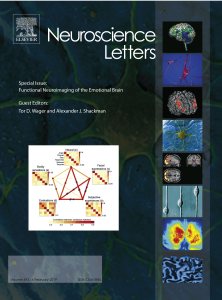 Emotions are central to who we are. They influence our worldviews, decisions, and memories and play a key role in determining which of the myriad events bombarding our senses we see, hear, and feel. Emotions arise in direct proportion to personal meaning—how relevant a stimulus or situation is to our well-being. They are thought to be hallmarks of integrative brain processes that bind together perceptions of the world, interoception of our bodily states, conceptions of meaning, and prospections about the future. Their integrative nature also makes them complex, and for decades the brain processes that underlie emotions have remained part of a dark unknown space in our understanding of the mind. However, recent years have witnessed a resurgence of interest in the organization of emotional brain systems. Numerous papers, reviews, and books—academic and popular-press—deconstruct the ‘emotional brain’ and its implications for health, disease, and other kinds of practically important outcomes. Our Special Issue of Neuroscience Letters, Functional Neuroimaging of the Emotional Brain (Guest Edited by Tor Wager & Alex Shackman), surveys recent advances in this burgeoning area of research, with leading investigators from across North America and Europe contributing 10 original theoretical reviews. This exciting body of work encompasses a broad spectrum of populations—from rodents and monkeys, to children and psychiatric patients—and showcases a wide variety of paradigms, measures, analytic strategies, and conceptual approaches.
Emotions are central to who we are. They influence our worldviews, decisions, and memories and play a key role in determining which of the myriad events bombarding our senses we see, hear, and feel. Emotions arise in direct proportion to personal meaning—how relevant a stimulus or situation is to our well-being. They are thought to be hallmarks of integrative brain processes that bind together perceptions of the world, interoception of our bodily states, conceptions of meaning, and prospections about the future. Their integrative nature also makes them complex, and for decades the brain processes that underlie emotions have remained part of a dark unknown space in our understanding of the mind. However, recent years have witnessed a resurgence of interest in the organization of emotional brain systems. Numerous papers, reviews, and books—academic and popular-press—deconstruct the ‘emotional brain’ and its implications for health, disease, and other kinds of practically important outcomes. Our Special Issue of Neuroscience Letters, Functional Neuroimaging of the Emotional Brain (Guest Edited by Tor Wager & Alex Shackman), surveys recent advances in this burgeoning area of research, with leading investigators from across North America and Europe contributing 10 original theoretical reviews. This exciting body of work encompasses a broad spectrum of populations—from rodents and monkeys, to children and psychiatric patients—and showcases a wide variety of paradigms, measures, analytic strategies, and conceptual approaches.